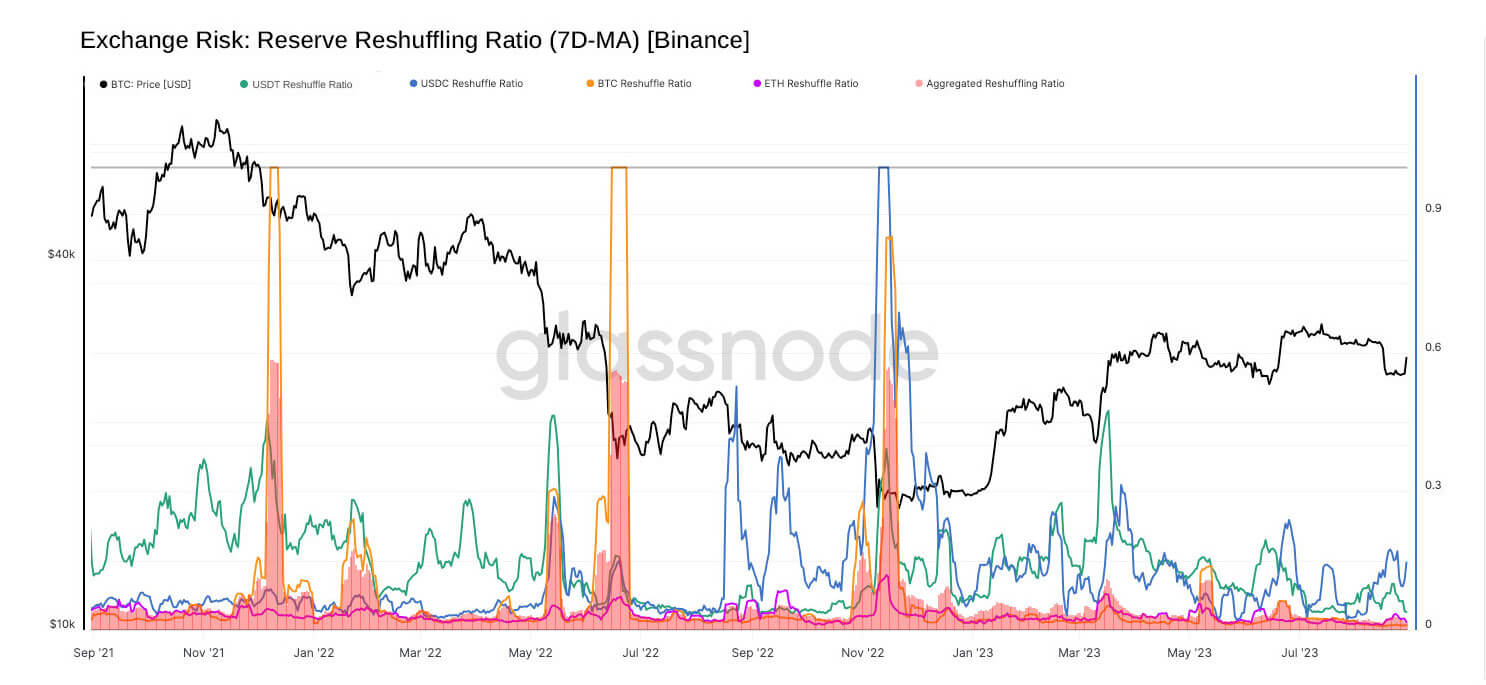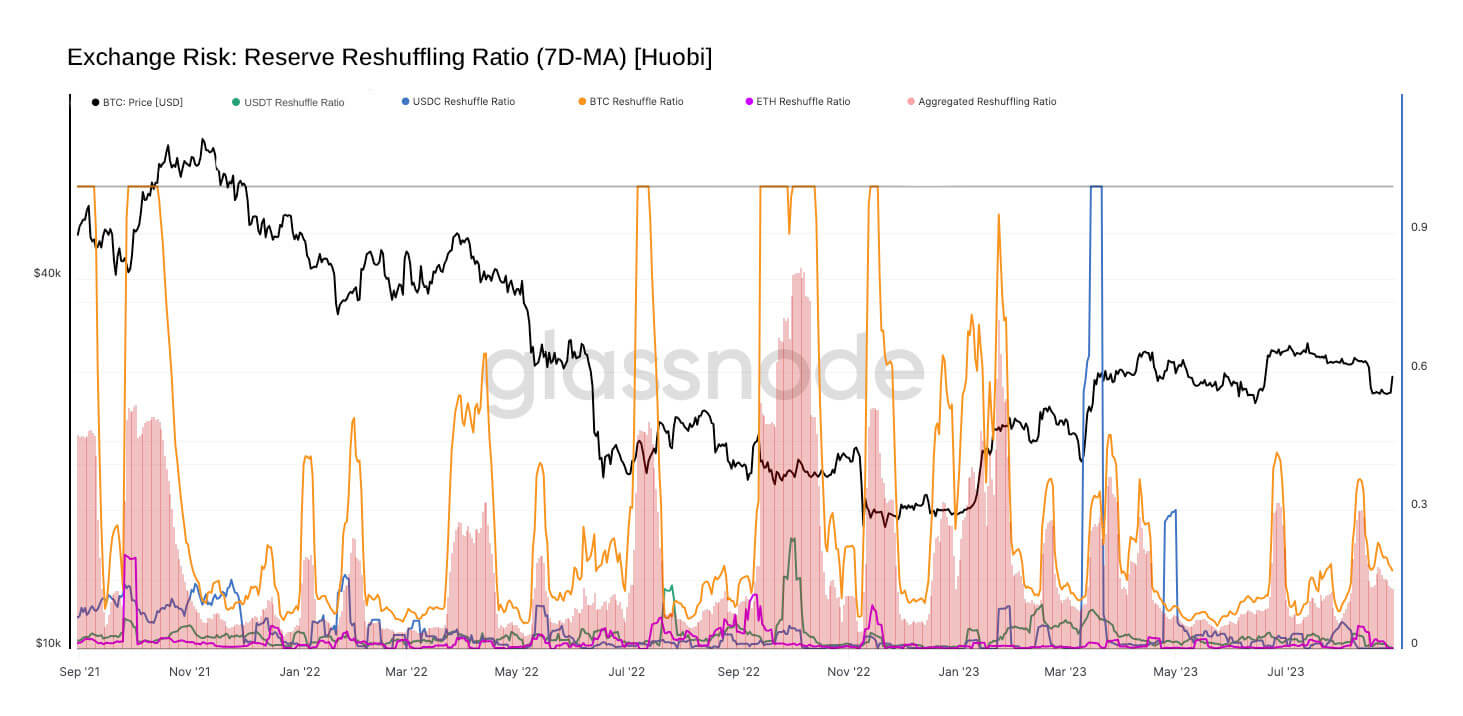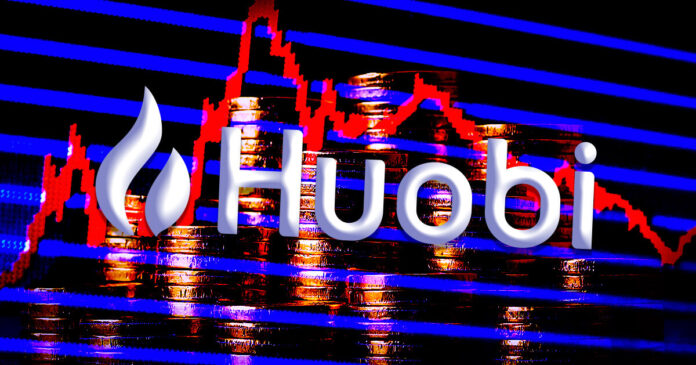The downfall of FTX has underscored the counter-party risks that exchanges can impose on the market. As traders and investors tread with heightened caution, there’s an evident demand for reliable metrics to evaluate the health of these platforms.
Using the FTX data set as a benchmark, Glassnode has rolled out three innovative indicators designed to pinpoint high-risk scenarios among the major exchanges: Coinbase, Binance, Huobi, and the now-defunct FTX.
One of the indicators is the exchange reliance ratio, which shows when a significant portion of an exchange’s balance is regularly transferred to or from another exchange. A significant portion of an exchange’s balance being consistently moved to or from another platform might suggest a deep reliance or co-dependence on liquidity.
A positive ratio indicates net inflows to the exchange, while a negative one signifies net outflows. Prolonged periods of large negative values can be a red flag, indicating assets rapidly departing the exchange in favor of another platform.
While Binance and Coinbase exhibit a relatively low reliance ratio, indicating minor fund movements compared to their vast balances, Huobi’s data paints a different picture. Recent figures showed pronounced negative reliance ratios across all Huobi assets, indicating a marked increase in transfers from Huobi to other exchanges.
Huobi’s internal reshuffling ratio, which shows the proportion of an exchange’s balance transacted internally over a set period, mirrors that of Binance.


However, context is crucial here. Binance, the largest and most popular exchange on the market, dwarfs Huobi in every metric. Thus, the reshuffling spikes observed with Huobi could be magnified due to its depleting reserves.

This connection between diminishing reserves and pronounced negative reliance ratios could be concerning. It suggests that assets are being moved internally with greater frequency and being transferred out of Huobi at a growing rate.
The correlation between Huobi’s dwindling reserves and its significant negative reliance ratios might indicate eroding confidence in the platform. While these metrics don’t definitively label an exchange as high-risk, the coming months will show if these indicators are passing anomalies or precursors to a more profound shift.
The post Huobi seeing increased outflows to competitors according to new reliance metrics appeared first on CryptoSlate.
Credit: Source link






















 Bitcoin
Bitcoin  Ethereum
Ethereum  XRP
XRP  Tether
Tether  Solana
Solana  USDC
USDC  Dogecoin
Dogecoin  Cardano
Cardano  Lido Staked Ether
Lido Staked Ether  TRON
TRON  Wrapped Bitcoin
Wrapped Bitcoin  Chainlink
Chainlink  Wrapped stETH
Wrapped stETH  Avalanche
Avalanche  Sui
Sui  Stellar
Stellar  Litecoin
Litecoin  Toncoin
Toncoin  Shiba Inu
Shiba Inu  Hedera
Hedera  LEO Token
LEO Token  USDS
USDS  Hyperliquid
Hyperliquid  Polkadot
Polkadot  WETH
WETH  MANTRA
MANTRA  Bitcoin Cash
Bitcoin Cash  Bitget Token
Bitget Token  Ethena USDe
Ethena USDe  Wrapped eETH
Wrapped eETH  Uniswap
Uniswap  Monero
Monero  NEAR Protocol
NEAR Protocol  Pepe
Pepe  WhiteBIT Coin
WhiteBIT Coin  Aave
Aave  Bittensor
Bittensor  Ondo
Ondo  Aptos
Aptos  Internet Computer
Internet Computer  Dai
Dai  Official Trump
Official Trump  Ethereum Classic
Ethereum Classic  Mantle
Mantle  Tokenize Xchange
Tokenize Xchange  OKB
OKB  Gate
Gate  sUSDS
sUSDS  Sonic (prev. FTM)
Sonic (prev. FTM) 
